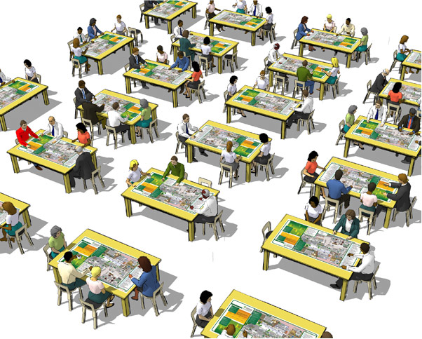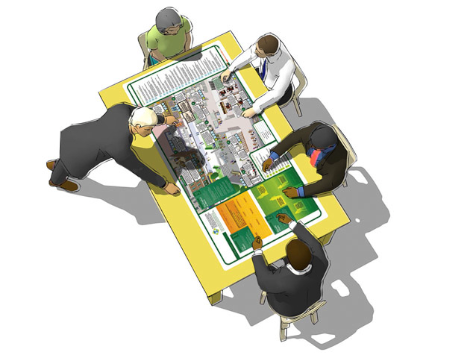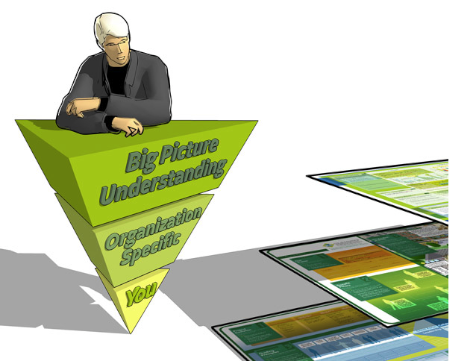Collaborative Experiential Learning

Learning Mats allows for a participant driven experience - as opposed to facilitator driven - to ensure that everyone, at every session, has the same learning experience, indenpendent of facilitator.
Learning Mats are designed to guide your groups through the content. Bring people together in teams, yet enable each person to draw his or her own conclusions.
Learning Mats are designed to generate conversations and discussions, and help participants process information more effectively and gain insights from many points of view.
People identify and understand how they can contribute to success.
Groups of four
ensures everyone is heard. Different personal experiences and insights contribute to small group discussions. Participants share their experiences, insights, knowledge and expertise with each other, and make decisions together, as a group.Size
is intentionally chosen so that everyone in the group have ownership of the content.
The process
There are no wrong or right answers to some activities, only more or less appropriate. – It’s the process of getting to the answers that is important.participant driven.Learning styles
Engaging to multiple learning styles where participants build their own mental models of complex concepts.
The structure of a program
This is a description of a typical program structure, starting wide with general concepts and then narrowing in on specifics. This structure can of course vary between programs, but I've found that it is works as a general guide when developing learning programs for most issues.
Part 1 is the big picture understanding
… where participants explore the marketplace and its players, customer demands, trends and other factors involved in deciding our new strategy and direction.
Part 2 focuses in on the realities of your organization
… and how it relates to the components of the strategy. Best practices, projects and initiatives, tools and resources are some of the aspects participants will interact with.
Part 3 revolves around YOU
… it narrows the focus to how you relate to the strategy, company and co-workers. What are the expectations of you, and what can you commit to? We invite you to share the vision of success.